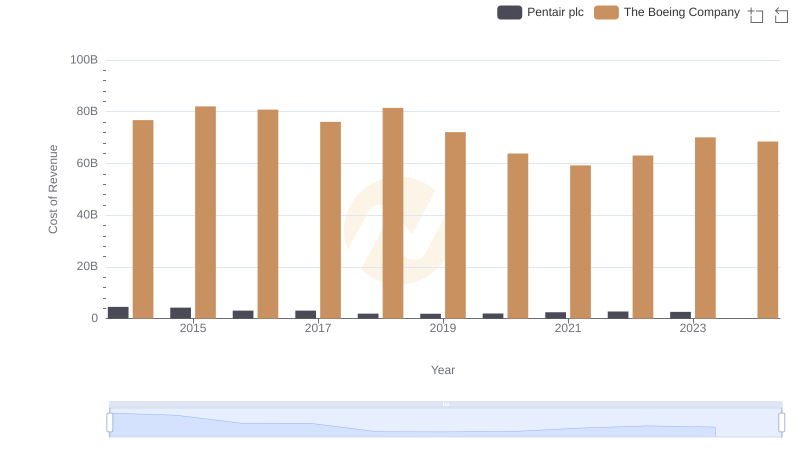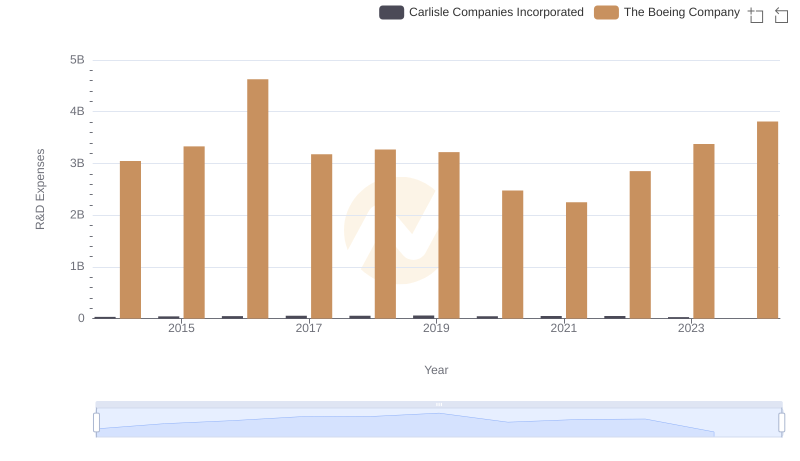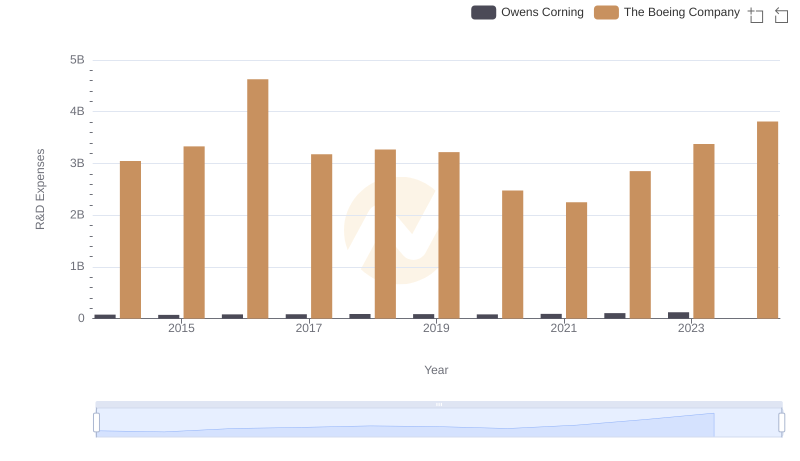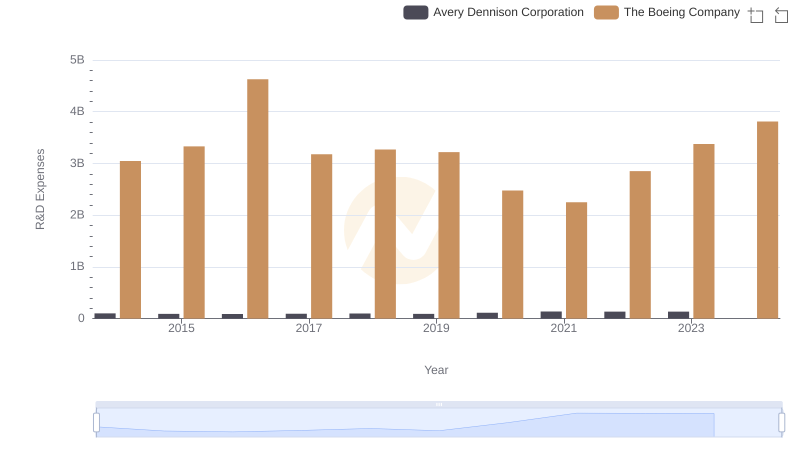| __timestamp | Pentair plc | The Boeing Company |
|---|---|---|
| Wednesday, January 1, 2014 | 117300000 | 3047000000 |
| Thursday, January 1, 2015 | 119600000 | 3331000000 |
| Friday, January 1, 2016 | 114100000 | 4627000000 |
| Sunday, January 1, 2017 | 115800000 | 3179000000 |
| Monday, January 1, 2018 | 76700000 | 3269000000 |
| Tuesday, January 1, 2019 | 78900000 | 3219000000 |
| Wednesday, January 1, 2020 | 75700000 | 2476000000 |
| Friday, January 1, 2021 | 85900000 | 2249000000 |
| Saturday, January 1, 2022 | 92200000 | 2852000000 |
| Sunday, January 1, 2023 | 99800000 | 3377000000 |
| Monday, January 1, 2024 | 93600000 | 3812000000 |
Unleashing insights
In the world of innovation, research and development (R&D) spending is a key indicator of a company's commitment to future growth. Over the past decade, The Boeing Company and Pentair plc have showcased contrasting approaches to R&D investment. From 2014 to 2023, Boeing's R&D expenses have consistently dwarfed those of Pentair, with Boeing investing nearly 30 times more on average. In 2023, Boeing's R&D spending surged to approximately $3.4 billion, marking a 50% increase from its 2020 low. Meanwhile, Pentair's R&D investment remained relatively stable, peaking at around $100 million in 2023. This disparity highlights Boeing's aggressive pursuit of technological advancement in aerospace, while Pentair maintains a steady focus on its core water solutions. As we look to the future, these spending patterns may shape the competitive landscape in their respective industries.

Comparing Cost of Revenue Efficiency: The Boeing Company vs Pentair plc

Research and Development Expenses Breakdown: The Boeing Company vs Carlisle Companies Incorporated

The Boeing Company vs Owens Corning: Strategic Focus on R&D Spending

Comparing Innovation Spending: The Boeing Company and Avery Dennison Corporation